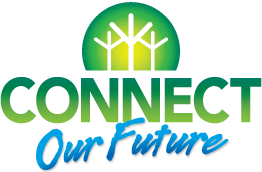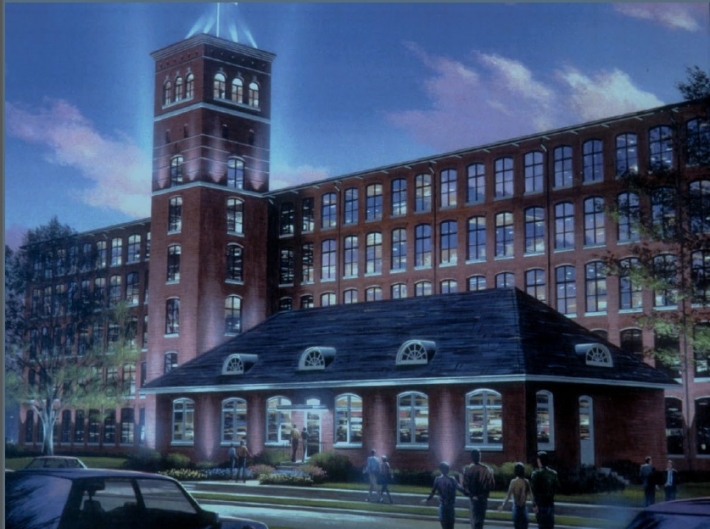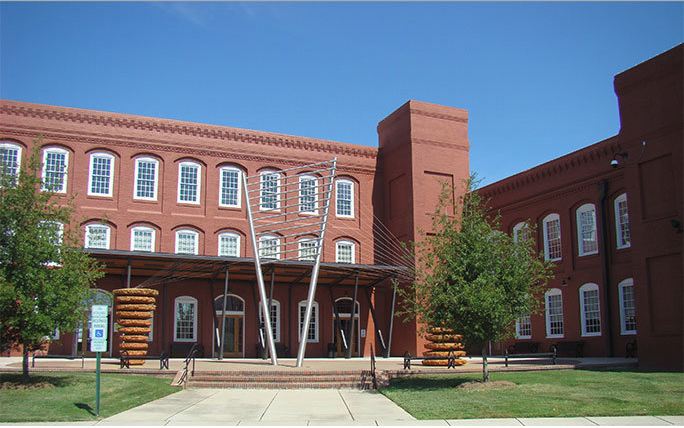Adaptive reuse refers to the process of reusing an old site or building for a purpose other than which it was originally designed for. This may include reusing a school building for housing, a factory for office space, or an historic mill for retail, residential and restaurant mixed use.
Why is this important to your community?
Following the decline of industry throughout the region, in particular the textile industry, the CONNECT region has a number of underutilized or vacant industrial sites that are prime for redevelopment or reuse. Virtually every one of the CONNECT region’s 120 municipalities has at least one vacant mill or industrial property, many of which are located in or near town centers, are walkable, are in many cases structurally sound, but are functionally obsolescent, so will likely not be used again for the heavy industrial functions they previously served. As vacant buildings, they contribute to disinvestment in the communities in which they are located.. Adaptive reuse seeks to preserve existing buildings by retrofitting spaces for new uses while retaining much of the original features of the structure, and making use of the town’s existing infrastructure and transportation networks. Many adaptive reuse projects have successfully preserved historically or architecturally relevant buildings and resulted in time, cost, and environmental savings when compared to new construction. Adaptive reuse can also strike a balance between historic preservation and complete demolition, and bring vital businesses, shopping, housing, or entertainment back into town centers or neighborhoods. They also tend to generate higher tax revenues per acre than many other forms of development, especially if they are located in or near town centers.
Skip directly to
How Does It Work?
Resources
Using the Tool
Partners
Where Has It Worked?
Where is it appropriate to use?
What priorities does it address?
What other tools are related?
How does it work?
Adaptive reuse involves the physical conversion of a building into a new use. It can mean the preservation of monumental structures—such as textile mills—into new uses such as mixed-use complexes, office, or residential uses, yet also can be applied to a smaller scale. The conversion of downtown commercial buildings into ground-floor retail with residential above is also a change of use that may be done on an incremental basis, as is the conversion of historic residences into stores and cafes. While preservation is typically supported in concept by community members, the process becomes cumbersome due to regulations and financing, which oftentimes makes projects less financially feasible. Essentially, it up to the owner of a property to reuse a building, or not, and financial feasibility weighs heavily on that decision. If the market is very strong in a community, historic rehabilitation may be of value without incentives due to the attractiveness of the location or the building appearance, especially if the building is structurally sound. However, the majority of the time, the scale must be tipped with financial incentives, such as incentive zoning, transfer of development rights, façade improvements, or tax credits or abatements. The most well-known of incentives is the Federal Historic Preservation Tax Incentives program, which has made many success stories possible since established in 1986. However, the incentive is only available for income-producing properties and structures that are on the National Register of Historic Places or within a National Historic District. This represents a small subset of historic buildings, the remainder of which must be protected by local programs. It is up to individual municipalities to formally support historic preservation and adaptive reuse of historic properties so that incentives and supportive planning policies may encourage the preservation and reuse of historic buildings.
Adaptive reuse refers to the general process of reusing a building for another use. In general the best examples of adaptive reuse support the repurposing of buildings that no longer serve their original purpose, while preserving a piece of the community’s history and character. The reuse of historic textile mills is one example of how adaptive reuse can succeed locally and add economic value. While many of the region’s textile mills are currently abandoned, they still possess architectural, historic, and cultural significance in the community. In fact, many mills in the region, particularly those in more urban locations with access to transportation and employment options, have already been converted to other uses and provide examples of successful regional case studies. The practice of reusing abandoned mills is only one option, as adaptive reuse is becoming more attractive across the county and can be successful in former warehouses, schools, churches, and industrial buildings. The communities of the CONNECT region can incentive adaptive reuse through development codes, and developers can seek out historic, low-income, or New Markets tax credits to assist in financing a project.
Resources
- Historic Tax Credits (National Parks Services)
- Low-income housing tax credits (NC)
- Low-income housing tax credits (SC)
- New Markets Tax Credit Program
- South Carolina State Historic Preservation Office
- North Carolina State Historic Preservation Office
- Example of an Adaptive Reuse Plan (Ruth School Adpative Reuse Plan in Rutherford County, NC, funded in part by NCDOT)
- Adaptive Reuse Ordinance, Los Angeles (approved in 1999 for downtown and extended into other neighborhoods in 2003) Association of Bay Area Governments – Adaptive Reuse
- Association of Bay Area Governments Adaptive Reuse Guidance
Ready to get started?
Using the Tool
- Review policies related to historic preservation in the community. Develop policies as part of the community’s comprehensive plan to encourage adaptive reuse of vacant or underutilized properties within the community.
- Assemble a list and map of potential adaptive reuse properties and targeted locations using municipal land use and ownership data. Work with economic development groups to vet the list of properties and identify other potential opportunities. Where possible, look at potential “adaptive re-uses” for the properties—what might they be needed for/most suitable for if re-used?
- Review current ordinances and determine the need for changes within the existing zoning regulations that would streamline the adaptive reuse process.
- Provide policy support for streamlining regulations, such as updating zoning codes, building codes, and encouraging fiscal incentives for adaptive reuse.
- Develop a print or online brochure / list of available properties for adaptive reuse to distribute to companies or developers looking to relocate within the area.
- Encourage the use of an online inventory of funding sources and links to key resources available to promote adaptive reuse (including historic preservation tax credits, New Market Tax Credits, and other incentives) through county resources, an economic development agency, and/or regional resources such as the COG, regional economic development agencies, etc.
- If your community has a publically-owned building that is a candidate for adaptive reuse, consider preparing an adaptive reuse feasibility study for that site that includes a building assessment and public process to discuss alternative uses.
- Determine the need and community support for code incentives and/or revisions that could spark investment and adaptive reuse of existing buildings. Examples include density bonuses for transfer of development rights for preservation of historic buildings, façade improvement grants, tax abatements. Such programs are made possible through the municipality, county, or economic entity and are typically established through enabling legislation.
Partners
- Advocacy Groups
- Architects
- Businesses / Business Associations
- Colleges and Universities
- Community Development Organizations
- Departments of Education / School Districts
- Developers
- Economic Development Organizations
Where has it worked?
Loray Mill - Gastonia, NC
About the Program
The Loray Mill, a 600,000 square foot 110 year old building, was once home to the Firestone Textile and Fibers and over 3,500 employees until 1993. Preservation North Carolina acquired the building in 1998 and began looking for a developer. After years of looking for developer partners, the Loray Mill Redevelopment organization began the $39 million renovation. The first phase was opened in 2014 and includes 190 loft apartments, a pool, health club, and restaurant amenities. The second phase, located in the 150,000 square foot wing of the mill will consist of an historic gallery, additional retail spaces, and public amenities.
Why it works
The Loray Mill developers successfully leveraged historic preservation tax credits to complete a mixed use development reusing a building key to the area’s history. The project is being funded mostly by a private grant given to Preservation North Carolina. However, without additional financial incentives in the form of tax credits for historic preservation, the mill project would not have been successful. The project has transformed a structure many described as blighted, to a development that may become a catalyst for neighborhood transformation in years to come.
http://www.charlotteobserver.com/2014/03/07/4749146/gastonias-historic-loray-mills.html#.U_X7RfldXTo
http://digitalinnovation.unc.edu/projects/loray-mill-project/
The Old Cotton Factory - Rock Hill, SC
About the Program
The Old Cotton Factory was constructed in Rock Hill in 1881, as the first steam-powered mill in the state.
Several mills occupied the mill during its heyday, including Carhartt Mill #1, Cutter Manufacturing, Gold-tex Mill, and Ostrow
Textile Company. Its final tenant, Ostrow, vacated the mill in 2001 and Rock Hill Economic Development Corporation took over ownership of the property. The development partnership The Old Cotton Factory, LLC (Bryan Barwick, Gary Williams, and Bob Perrin) purchased the mill in 2006 for $300,000 with the intention of rehabilitating and repurposing the building to new uses. The mill underwent a $12,000,000 renovation and now houses 90,000 square feet of office and other uses. The primary tenant—Williams and Fudge, a national college loan agency—includes a “mini-museum” featuring history of Rock Hill and the textiles industry.
Why it works
The success of the Old Cotton Factory was born in the strategic planning and partnerships of the City of Rock Hill as it dealt with the declining textile industry—its primary economic livelihood for generations. Two key partnerships included the Rock Hill Economic Development Corporation (RHEDC) formed in 1983 to combat the area’s economic decline and spearhead redevelopment and the Rock Hill Council of Neighborhoods was incorporated in 1999 to preserve and promote the integrity of the city’s neighborhoods and assist with the transformation of former mill communities. In 2003, project partners developed the Textile Corridor Master Plan which included a feasibility study and physical assessment for the redevelopment of Old Town Rock Hill and four associated mill sites. The following year, the city and county worked with the Rock Hill Council of Neighborhoods to develop the Neighborhood Master Plan to restore infrastructure, provide amenities, and spur investment.
Financing was key in developing the plans to support mill redevelopment in Fort Mill, as well as physical rehabilitation. The Textile Corridor Plan was made possible through $1,540,000 pledged by seven local partner organizations, as well as from EPA and HUD through CDBG funds. Additional federal grants were used to complete the assessment, cleanup, and redevelopment of the textile mills. For example, in 2003, the city obtained an EPA Brownfields Assessment grant to target three of the former mill properties. In 2005, the city received an EPA Cleanup grant and the State of South Carolina’s first EPA Revolving Loan Fund loan to address environmental issues.
Also, because the the Rock Hill Cotton Factory is on the National Register of Historic Places, it was able to make use of the federal tax credit for historic rehabilitation of historic buildings, for income-producing properties. In addition, the State of South Carolina offers a 10% credit to owners of historic buildings who successfully qualify for the Federal tax credits. Therefore, the Rock Hill Cotton Factory conversion was able to pursue an additional credit against local property taxes or state income tax equal to 25% of the rehabilitation expenses for the building. The owners also made use of New Market Tax Credits, resulting in a 39% reduction of eligible renovation costs applied toward federal income taxes. These financial incentives made the project financial feasible for the owners and helped to save the rich piece of historic fabric for the City of Rock Hill.
http://www.barwickassociates.com/images/CottonFactoryPDFPage.pdf
http://www.epa.gov/brownfields/policy/Mill_Report_110306.pdf
- Architects




